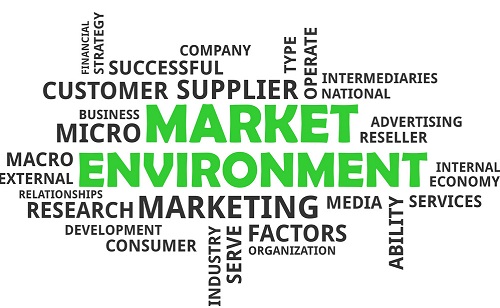Marketing Environment

The marketing environment refers to the external factors and forces that affect a company's ability to develop and maintain successful relationships with its target customers. It encompasses a wide range of elements, both controllable and uncontrollable, that influence a company's marketing decisions and strategies. Understanding the marketing environment is crucial for businesses to adapt, plan, and respond effectively to changes in the marketplace. The marketing environment can be broadly categorized into two main components:
Microenvironment: The microenvironment consists of factors that are close to the company and directly impact its ability to serve its customers. Key components of the microenvironment include:
Customers: The individuals or organizations that purchase the products or services. Understanding customer needs, preferences, and behaviors is essential for effective marketing.
Suppliers: Entities that provide the necessary inputs for the production of goods or services. The relationship with suppliers can affect the availability, quality, and cost of products.
Competitors: Other organizations offering similar products or services within the same industry. Analyzing competitors helps a company identify its competitive advantages and challenges.
Intermediaries: Entities such as distributors, retailers, and wholesalers that help bring products to customers. The effectiveness of distribution channels and relationships with intermediaries is vital.
Publics: Various groups that have an interest in or impact on the company's operations, including the media, government, financial institutions, and advocacy groups.
Internal Stakeholders: Individuals within the company, such as employees, management, and shareholders, who can influence or be influenced by marketing decisions.
Macroenvironment: The macroenvironment includes broader societal forces that are beyond the immediate control of the company. These factors shape the overall environment in which the company operates. Key components of the macroenvironment include:
Demographic Factors: Characteristics of the population, such as age, gender, income, education, and cultural background, which influence consumer behavior.
Economic Factors: Economic conditions, including inflation rates, interest rates, employment levels, and overall economic stability, which impact consumer purchasing power.
Social and Cultural Factors: Societal values, beliefs, attitudes, and cultural trends that influence consumer preferences and behavior.
Technological Factors: Advances in technology that can create new products, change the way business is conducted, or affect the efficiency of operations.
Political and Legal Factors: Government regulations, policies, and legal issues that impact business operations and marketing activities.
Environmental Factors: Concerns related to sustainability, climate change, and environmental responsibility that can influence consumer perceptions and affect the development of products and marketing strategies.
Global Factors: International influences, including global economic conditions, trade policies, and cultural differences, which impact businesses operating in a global marketplace.
Understanding and monitoring both the microenvironment and macroenvironment is crucial for marketers to identify opportunities, anticipate challenges, and adjust their strategies accordingly. A thorough analysis of the marketing environment helps companies make informed decisions and develop effective marketing plans that align with the external factors influencing their industry and target market.
Thank you,